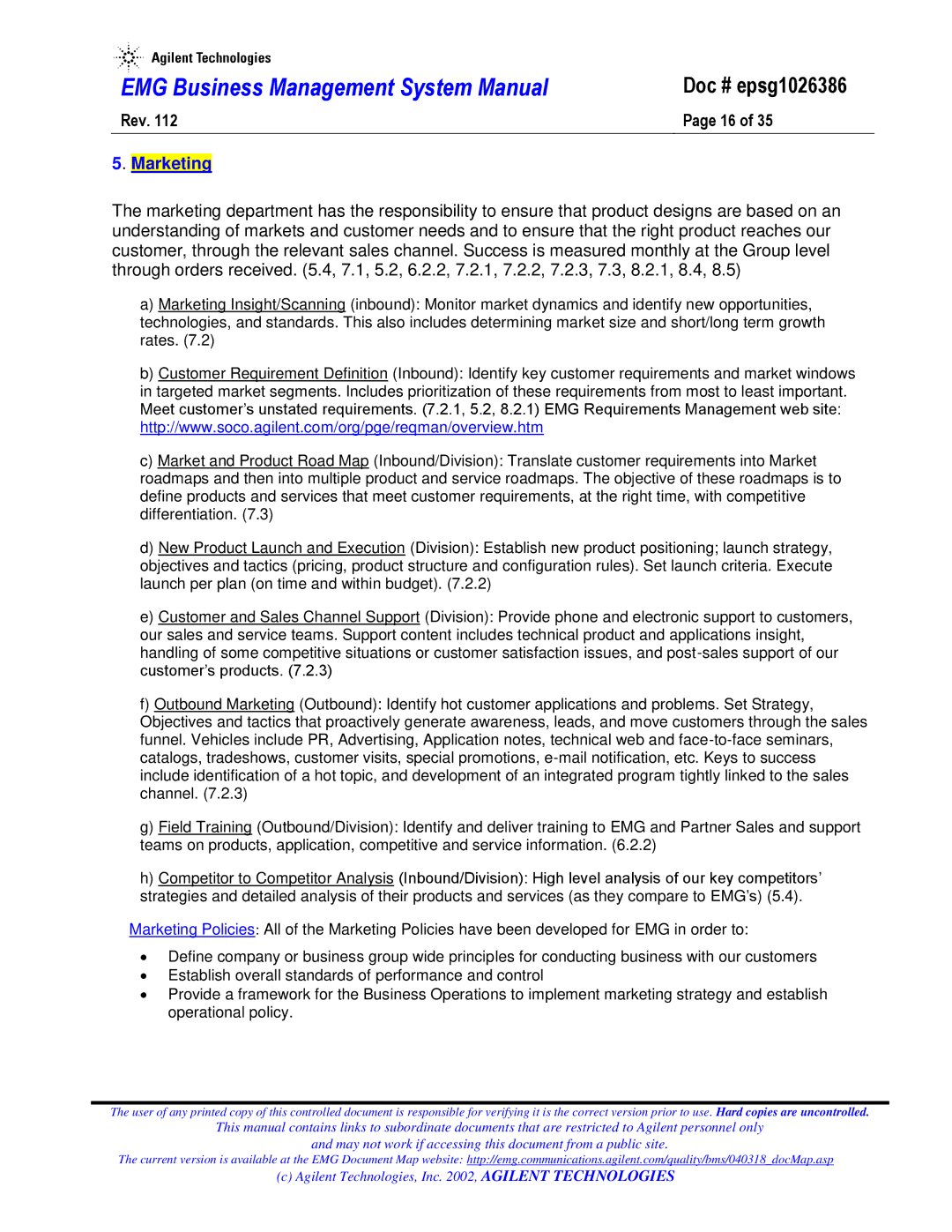| | |
EMG Business Management System Manual | Doc # epsg1026386 | |
Rev. 112 |
| Page 16 of 35 |
|
|
|
5. Marketing
The marketing department has the responsibility to ensure that product designs are based on an understanding of markets and customer needs and to ensure that the right product reaches our customer, through the relevant sales channel. Success is measured monthly at the Group level through orders received. (5.4, 7.1, 5.2, 6.2.2, 7.2.1, 7.2.2, 7.2.3, 7.3, 8.2.1, 8.4, 8.5)
a)Marketing Insight/Scanning (inbound): Monitor market dynamics and identify new opportunities, technologies, and standards. This also includes determining market size and short/long term growth rates. (7.2)
b)Customer Requirement Definition (Inbound): Identify key customer requirements and market windows in targeted market segments. Includes prioritization of these requirements from most to least important. Meet customer‟s unstated requirements. (7.2.1, 5.2, 8.2.1) EMG Requirements Management web site: http://www.soco.agilent.com/org/pge/reqman/overview.htm
c)Market and Product Road Map (Inbound/Division): Translate customer requirements into Market roadmaps and then into multiple product and service roadmaps. The objective of these roadmaps is to define products and services that meet customer requirements, at the right time, with competitive differentiation. (7.3)
d)New Product Launch and Execution (Division): Establish new product positioning; launch strategy, objectives and tactics (pricing, product structure and configuration rules). Set launch criteria. Execute launch per plan (on time and within budget). (7.2.2)
e)Customer and Sales Channel Support (Division): Provide phone and electronic support to customers, our sales and service teams. Support content includes technical product and applications insight, handling of some competitive situations or customer satisfaction issues, and
f)Outbound Marketing (Outbound): Identify hot customer applications and problems. Set Strategy, Objectives and tactics that proactively generate awareness, leads, and move customers through the sales funnel. Vehicles include PR, Advertising, Application notes, technical web and
g)Field Training (Outbound/Division): Identify and deliver training to EMG and Partner Sales and support teams on products, application, competitive and service information. (6.2.2)
h)Competitor to Competitor Analysis (Inbound/Division): High level analysis of our key competitors‟ strategies and detailed analysis of their products and services (as they compare to EMG‟s) (5.4).
Marketing Policies: All of the Marketing Policies have been developed for EMG in order to:
∙Define company or business group wide principles for conducting business with our customers
∙Establish overall standards of performance and control
∙Provide a framework for the Business Operations to implement marketing strategy and establish operational policy.
The user of any printed copy of this controlled document is responsible for verifying it is the correct version prior to use. Hard copies are uncontrolled.
This manual contains links to subordinate documents that are restricted to Agilent personnel only
and may not work if accessing this document from a public site.
The current version is available at the EMG Document Map website: http://emg.communications.agilent.com/quality/bms/040318_docMap.asp
(c) Agilent Technologies, Inc. 2002, AGILENT TECHNOLOGIES
